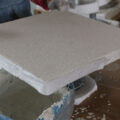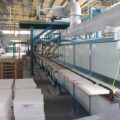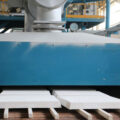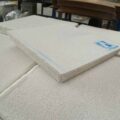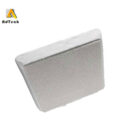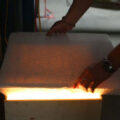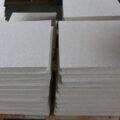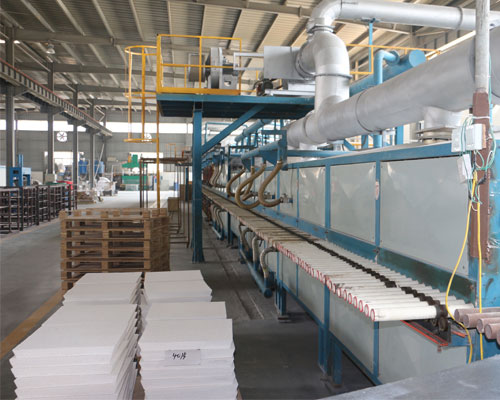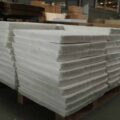Ceramic foam filter manufacturer process include foam impregnation, drying, and sintering.
Ceramic Foam Filter Manufacturer Process
Impregnation
The traditional domestic impregnation method is manual extrusion, which is easy to cause uneven distribution of foam slurry, or the surface seems to be uniform without dead holes, but the internal distribution is uneven and there are dead holes. The advanced method is to adopt a mechanical extrusion method to automatically squeeze the foam through four rollers.
The above shortcomings can be completely overcome, the product quality is improved, and the work efficiency can be greatly improved. However, mechanical extrusion has higher requirements for foam, and foam with a lower quality is easy to tear during mechanical extrusion.
In the foam impregnation process, two issues should be paid attention to: one is weight, and there is an optimal amount of mud impregnated with different sizes of ceramic foam filter. Too little immersion will reduce the strength of the filter plate; too much will cause dead holes and mud waste. The amount of dipping slurry can be controlled by adjusting the roller spacing of the dipping machine. Another problem is to prevent the foam from deforming.
After the foam is immersed in the mud, the elasticity is weakened, and the size and shape have changed. If you are not careful, the finished product will be scrapped due to irregular shape. In general, standard templates can be used to shape the immersed foam to control its deformation.
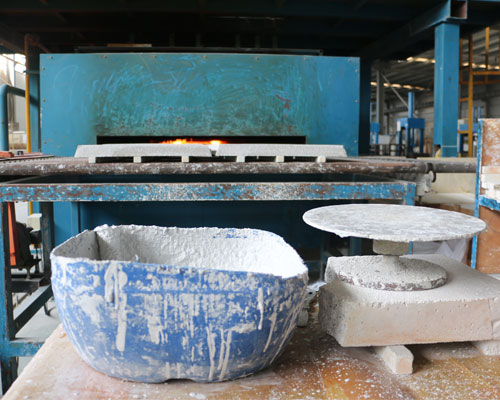
Drying and Sintering
Sintering is a key link in the production of ceramic foam filters. In order to prevent the filter plates from deforming, they must be dried before sintering and can be installed in the furnace for sintering after drying. One of the keys to drying and sintering is temperature control. Poor temperature control will cause deformation during drying.
The main equipment for sintering is the sintering furnace. The internal temperature of the sintering furnace should be uniform, the temperature control error should be small, the heating rate of the sintering degree and the sintering temperature should be designed appropriately. Too fast heating will cause the water to evaporate too fast, which will easily cause deformation and cracks in the filter plate; too slow heating will reduce production efficiency.
If the holding temperature is too low and the time is too short, it will affect the strength of the ceramic filter foundry, but the higher the temperature, the longer the better. The high temperature and the long time not only waste energy and increase the cost; moreover, the mud will become porcelain at high temperatures.
Although the mechanical strength is improved, the thermal shock resistance and surface activity are reduced, which leads to the reduction of the adsorption capacity of the filter plate to impurities. Under a proper sintering procedure, on the one hand, the mechanical properties such as the strength of the filter plate can be guaranteed, and on the other hand, the mud will not be porcelain. The mud aggregates are not sintered into one body, but are bonded to each other. There is a certain gap between them to form an uneven surface.


